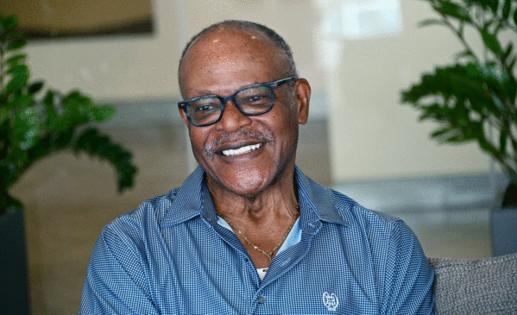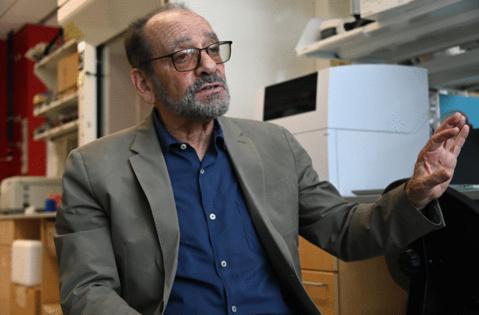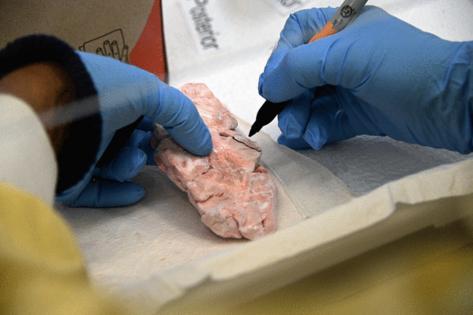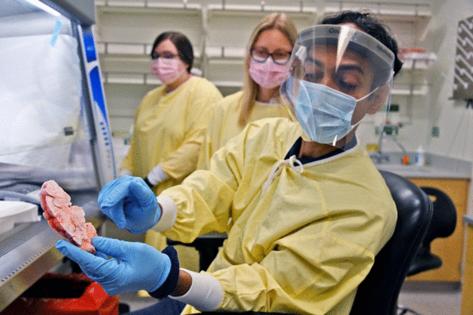Baltimore's Lieber Institute partners with Black community leaders to unlock secrets of the brain: 'We will not be left behind'
Published in News & Features
BALTIMORE — A tinny buzzing sound echoed through a third-floor laboratory of a building on North Wolfe Street.
Perched on a stool, Dr. Thomas Hyde held an electric dental drill — the instrument he and his colleagues have found works the best for delicately extracting tissue samples. Another researcher handed him a dull pink slice of someone’s brain about the size and shape of a chicken cutlet.
He used the drill to remove a tiny piece of the caudate nucleus — a seashell-shaped structure deep in the brain that plays a critical role in many higher neurological functions.
Floors below, in the basement of the shiny office tower owned by the Johns Hopkins University, thousands more brains — more than 4,300 in total — are stored at temperatures 80 degrees below freezing. Without question, it is the largest collection in the world of postmortem brains devoted to the study of neuropsychiatric disorders.
This is the Lieber Institute for Brain Development, a nonprofit research organization affiliated with the Johns Hopkins University School of Medicine. It was founded in 2010 by the parents of children with schizophrenia. Through intense study of how the genes a person inherits from their ancestors determine the way their brain is built — and how that architecture may later degrade — scientists hope to develop new treatments and therapies for people living with these disorders.
But there’s a major weakness in the data available to study genetic disorders: Even though people of European descent make up less than 16% of the world’s population, they constitute 81% of large-scale genomic databases.
In recent years, the Lieber Institute has been trying to diversify its research and brain collection to better understand why people with African ancestry are far more likely than people of European descent to experience serious mental health problems, develop Alzheimer’s disease and die by suicide before turning 13 — and less likely to develop Parkinson’s disease and other neurological disorders.
In 2019, the institute joined with Morgan State University and African American community leaders in Baltimore to create the African Ancestry Neuroscience Research Initiative. Through this partnership, officials and experts hope to grow the pipeline of Black neuroscientists and allow community members to help shape what questions researchers explore and how they interpret their findings.
The Lieber Institute receives donated brains from medical examiners in four sites around the country, including in Baltimore, where the legacy of Henrietta Lacks — a Black woman from Turner Station, whose cells were taken from her without her consent by a doctor at the Johns Hopkins Hospital — continues to loom large.
“To be perfectly frank, we needed help,” said Dr. Danny Weinberger, CEO and director of the Lieber Institute. “We couldn’t be a group of white nerd scientists — no, seriously — saying, ‘We’re going to do all this stuff to help the Black community.’
“We wanted to bring the community in before we did anything.”
Now, Weinberger said, the Lieber Institute has 900 brains in its collection from people with African ancestry. Scientists recently used 425 of these brains to study the link between genetic ancestry and the prevalence of neurological and psychiatric diseases in people of African and European descent. The study, the first to explore how African ancestry influences gene function in the human brain, was the cover article in June’s edition of Nature.
In the study, researchers found evidence that genetic ancestry is partially responsible for the increased prevalence of Alzheimer’s and stroke in African Americans and the decreased prevalence of Parkinson’s. But they didn’t find evidence that ancestry is responsible for the disparity in psychiatric disorders and behavioral traits — meaning these differences may be driven by environmental factors, like less quality education and housing, unsafe neighborhoods, worse access to food and other effects of systemic racism.
African Americans, in general, have mixed ancestry — they might have anywhere from 0 to 60% European ancestry. Lieber scientists identified more than 2,500 genes in the brains of African Americans with significant differences in expression related to their proportion of African versus European ancestry. They were then able to figure out how much a person’s ancestral variation predicted corresponding variation in gene abundance.
“Genes for common medical illnesses — like heart disease, stroke, diabetes, asthma, schizophrenia, depression, anxiety disorder, bipolar disorder — these genes are not fate genes,” Weinberger said. “It’s not like Huntington’s disease or cystic fibrosis, where if you get the gene, you’ve got the disease. These are genes that change the probability. They move you a little bit in one direction or another.”
The article, published by lead author and Lieber scientist Kynon Benjamin, was paired with a commentary written by Duke University researcher Kafui Dzirasa, his former doctoral student Gwenaëlle E. Thomas and longtime Baltimore community organizer the Rev. Dr. Alvin Hathaway.
Hathaway and the researchers, who were key in raising more than $3 million for the project from the state of Maryland and philanthropic sources, including the Chan Zuckerberg Initiative, stressed the importance of involving marginalized community members in studies about them.
“Science is a human enterprise,” the article began. “It matters who asks the questions. It matters who interprets the results. It matters who tells the stories.”
Before becoming pastor at Union Baptist Church, Hathaway served as assistant pastor at Pennsylvania Avenue AME Zion Church, where he became friends with a worshiper named Maggie Quille. When she was a child, her uncle was involved in the Tuskegee syphilis experiment — an infamously unethical study that did not get the informed consent of participants and did not offer those with syphilis the readily available treatment for the disease.
Quille, who died in 2012, used to receive a monthly check in the mail from the government for her uncle’s participation in the study. Hathaway would drive her to the bank to cash it, and she’d tell him stories about growing up in Alabama. Despite her uncle’s experience with the medical system, she became a nurse.
“She helped me to understand that yes, you can have tragic experiences,” Hathaway said, “but what do you do to contribute? What do you do to make change? Get involved?”
He has the sense that trust is slowly building between research institutions and the Black community in Baltimore, he said. Over the years, he’s watched as hospitals like Hopkins and those in the University of Maryland Medical System seem to have become more sensitized to the concerns of people of color and work to improve their patient experience.
Each of the brains in the institute’s collection was donated by the deceased person’s family following a rigorous consent process often conducted within a few hours of their loved one’s death. Hyde, the institute’s chief medical officer, has made thousands of phone calls to grieving family members in the past 14 years.
He has noticed that people of African descent are just as likely to agree to donate their loved one’s brain as people of European descent. Instead, he said, cultural, personal and religious reasons are more likely to dissuade someone.
The calls can be hard to make. In each one, he spends upward of 20 minutes with grieving family members, who are often reeling from an unexpected death of a loved one by suicide or overdose. He explains what the Lieber Institute is and what scientists are trying to discover, and answers any questions they have.
“They understand that we’re very oriented toward finding new treatments and new targets for treatment for these disabling disorders,” Hyde said. “And for a lot of families, that makes a tragic, unexpected, sudden loss a little bit less painful.”
Priscilla Agnew-Hines remembers the phone call she got from the Lieber Institute after her beloved son, Larry Agnew, died from an overdose at age 41. She agreed almost immediately to donate his brain to the institute.
For years, Agnew-Hines had wondered what triggers a person to develop a substance use disorder. In 2014, she became a recovery coach to help those struggling with addiction. She’s grateful that her son — a talented drummer and athlete, who would bring home children from around the neighborhood in the summer to share popsicles with them — will be able to help researchers figure out the root cause of addiction after his death.
“I’m going to be the voice that helps other families that lost their sons due to this,” she said. “I don’t want families to continue to struggle. I don’t want them to have to hide.”
The study published in May is just the “tip of the iceberg” of what Lieber scientists want to achieve, Weinberger said. Down the road, Hathaway hopes the institute can establish partnerships with other historically Black colleges in the area, like Coppin State University in West Baltimore.
And Dzirasa expects researchers will dive even deeper into the brain’s genomic architecture in future studies.
In the commentary that accompanied the published study, Dzirasa, Hathaway and Thomas described Lieber’s efforts as a “down payment” on addressing the historical harm caused by exclusionary practices in science.
“Science continues to move forward,” the last paragraph of the piece read. “But this time, we will not be left behind. These are our questions. This is our story.”
-------
©2024 The Baltimore Sun. Visit at baltimoresun.com. Distributed by Tribune Content Agency, LLC.














Comments